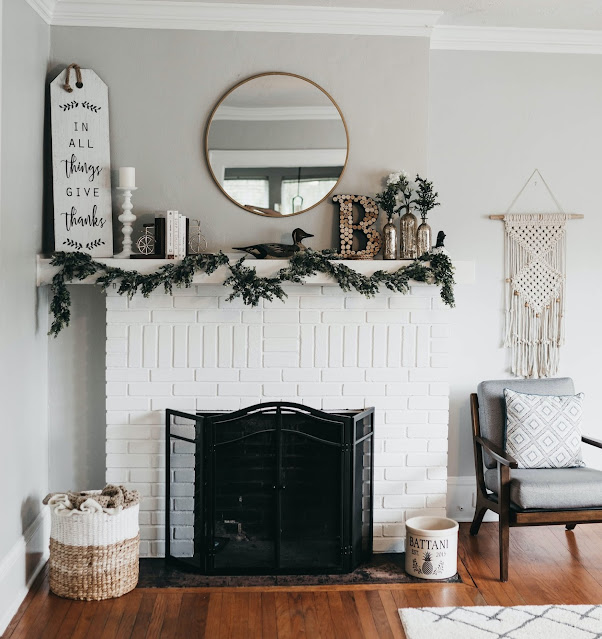Time for a Reset: How to Live Fearlessly with Less
Our culture has really done a number on us. We've been conditioned to believe that luxuries are necessities and that we never have enough. We take for granted things that most of the world doesn't even dream of having.
We all know that most of the world lives with far less than what we have in our homes right now. They might be happy with some basic shelter, a few changes of clothes, two or three simple meals a day, clean water, and some education and medical care for their children. Forget about TVs, computers, iPhones, knickknacks, or overflowing closets.
But we also forget that only a few decades ago, our parents and grandparents enjoyed happy lives with much less than we think we're entitled to. Not that long ago, people lived without air conditioners, dishwashers, microwave ovens, computers, video game consoles, Disney cruises, and more. I can remember living without those things.
Related article: Why Mid-Century Minimalism is the Way to a Better Future
The challenge
A minimalist is someone who lives with what's necessary, instead of falling for our culture's hype. So here's an audacious minimalist decluttering goal: Cut it in half.
8 pairs of jeans? Cut it in half. 12 tee shirts? Cut it in half. 6 extra blankets in the linen closet? Keep half. Three sets of dishes? Cut by 50% – keep your favorite versatile set plus the dinner or dessert plates from a second set.
Cut your mugs in half, your spatulas, your shoes, your jewelry. Your wall art and knickknacks. Books, games, throw pillows. Restaurant meals and fancy coffee drinks. Hobbies, committees, and hours in front of a screen.
The choices of what to keep will show you your priorities, and I guarantee that if you're like the typical American you'll still have plenty.
Related article: One Surprising Reason to Declutter Half of Your Stuff
The fear
This may sound extreme and impossible to you, so why not test what I'm saying? Don't go crazy all at once – simply cut one category of things in half. Can you manage with half of your knives, or half of your towels? Give it a trial for a week or two, and see what you discover. If the number is truly too small for practicality, increase it a bit. Find out what you really need. Then test with another category.
You may rightly ask, "Karen, have you done this?" It's been a long time since I cut my belongings in half. I don't have a dozen shirts for winter, or six pairs of winter shoes, or four winter jackets. I don't have two purses. I don't have two sets of dishes or a block of knives in multiple sizes. I own half that, and it's enough.
It might not be quite enough for you, but removing 25% (or even just 10%) of what you own will give you a taste of the benefits.
Here's one thing I know for sure. When you live with less, you can live without fear, because you know you have what you need.
The results
This project will let you gain insight into how much we all buy that we don't wind up using more than once or twice, how much wasted money that represents, and what the environmental costs are. It will let you see how often you say yes when you don't really want to.
Cut your stuff in half, and you may find yourself able to demolish debt, increase savings, give to causes you care about, and still have more money at the end of every month. More time too.
See if your home doesn't feel spacious, or even too large. See if it's not easier to keep clean. See if you ever struggle to find an item you need or create a place for it to belong. And see if you have more focus and less stress.
This sounds like magic, but there's nothing really magical about "cut it in half." Reducing by half is a tool that helps you pay attention and question whether the things you have and want and do are really necessary, or if they're taking resources away from what matters more to you.
Once you step outside of our culture's message of "more, more, more," you'll stop feeling so bored and discontented. You'll notice and enjoy the comfort you live with, and you'll realize that you have better things to do with your time and talents than to go shopping.
Are you ready for that reset?
It's too easy to accumulate much more than we need or even want. We feel overburdened, and our true needs may be overlooked, buried under piles of possessions and a relentless schedule.
My Minimalist Basics series* is much more than a guide to tidying up. It explores life with less clutter, busyness, debt, and stress. It arms you with practical strategies that help you identify and make room for the people, activities, and belongings that really matter to you, while minimizing everything else.
Discover:
- how limits increase freedom
- how elaborate storage solutions hide clutter and keep you from accessing your favorite things
- how a curated wardrobe helps you discover your personal style and self-confidence
- how fewer mementos help you enjoy more memories
- how to keep clutter from reappearing
- how slowing down and doing less makes you so much more productive
- how intentional spending preserves your life energy
- how mindfulness reduces anxiety and stress while expanding your experience of the world
- how gratitude crowds out negative emotions
- and more!
The Minimalist Basics series can help you find the life you want – with less stuff to distract you from it.
* This blog is reader-supported. If you buy through my links, I may earn a small commission.







Comments
Post a Comment